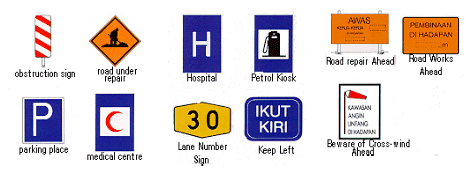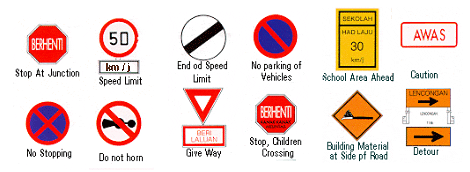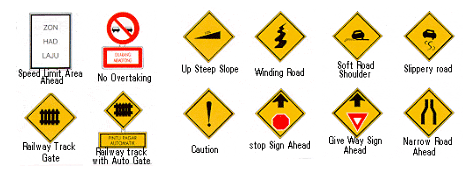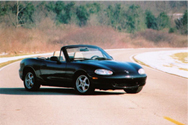Driving in Malaysia can be a wonderful experience. However, it is important to note that the general level of safety on the roads there is lower than in Singapore. We advise that anyone interested crossing the border for that weekend getaway to pay heed to some of the following advice:
Preparing yourself and things you may need:
- Always ensure that your car is in good working condition before you set off. If possible, get your mechanic to give the car a once over.
- Place an emergency kit in your car. The distances in Malaysia are far greater than in Singapore so in the unlikely event of an accident, help might take some time to arrive.
- For the same reason as above, pack some extra drinking water in case of a breakdown.
- If you don’t have one already, obtain a mobile phone with roaming capabilities. You may need it in the event of a breakdown or any other emergency.
- Don’t forget to have at least 3/4 of a tank of fuel before you leave Singapore (required under Singapore law).
- Make sure you have a cash card with you and that it contains sufficient funds to get you across the border.
- Make sure you have some Malaysian currency with you to pay for the various tolls and charges at the checkpoints, toll booths, etc.
- If you plan to drive to Malaysia regularly, you may like to consider getting a prepaid card to pay for the road tolls. More than one company sells these prepaid cards and each has its own toll booths which work exclusively for their own cards. Touch and Go (TAG) is a common operator worth considering.
- One can obtain maps of Malaysia from some petrol stations, books stores and on the Internet.
- If you are not a member of any Automobile Association, e.g. AA of Singapore, consider signing up. In the event of a breakdown, their service might just come in handy.
- Check your insurance benefits to see if vehicle recovery in West Malaysia is covered as a benefit.
Be safe, not sorry:
- If possible, try to go the road trip with a companion. This will reduce the likelihood of anything unpleasant happening.
- As far as possible, keep all doors locked and windows closed.
- Keep all your belongings out of sight, especially briefcases, handbags, laptops, etc. This includes even coins, small currency notes, stored value cards (like the Touch and Go toll cards).
- When stopping or parking, do not leave your passport, wallet and mobile phone in the car. Carry these with you even if you are going to the toilet for a couple of minutes.
- If possible, remove your car stereo or its face to remove temptation.
- Never leave your keys in the car unattended.
- If you need directions, ask at a petrol station or a toll booth. As far as possible, try not to ask random strangers.
- Try not to pick up hitchhikers.
- If you think you are being followed, drive towards a police station if you know where it is, if not, keep on brightly lit, fairly crowded roads.
- There are various scams involving accidents caused by someone bumping into the back of your car, someone waving you down to tell you you’ve got a flat tyre, etc. Be very wary.
- If someone waves you down telling you you’ve got a flat tyre, find a brightly lit, crowded spot or a petrol station to stop. If he follows you there, be extremely cautious and do not leave your vehicle unless you are confident that the situation is safe enough.
- If you are involved in an accident that appears to be deliberate. Do not get out of your car if possible. Instead, record down the details of the other vehicle involved and use your mobile phone to call for help. If possible, drive to a police station to lodge a report.
- If someone suspicious approaches your vehicle, try to drive off if possible. If not, be cautious, lock the doors, wind up the windows and be prepared to attract attention using your horn and lights.
- If you are confronted by a carjacker or a robber, do not put up resistance. Hand over your keys/wallet without a struggle. These are replaceable. Your life is not.
- If you really experience a flat tyre, try to drive to a brightly lit location like a petrol station to carry out the tyre change.
- If you do get stopped for a traffic violation, you may be asked to “settle the matter” on the spot. While we have heard of many instances where the driver “settles” the matter on the spot, there is no guarantee that your offence will not be recorded.
- Obey all the traffic regulations. The traffic signs are all in Bahasa Malaysia (the national language) so try and familiarise yourself with the basic words like:
- Awas – warning
- Kurangkan laju – slow down
- Had laju – speed limit
Here are some common road signs used in Malaysia (extracted and compiled from the Singapore Police website at www.spf.gov.sg):









